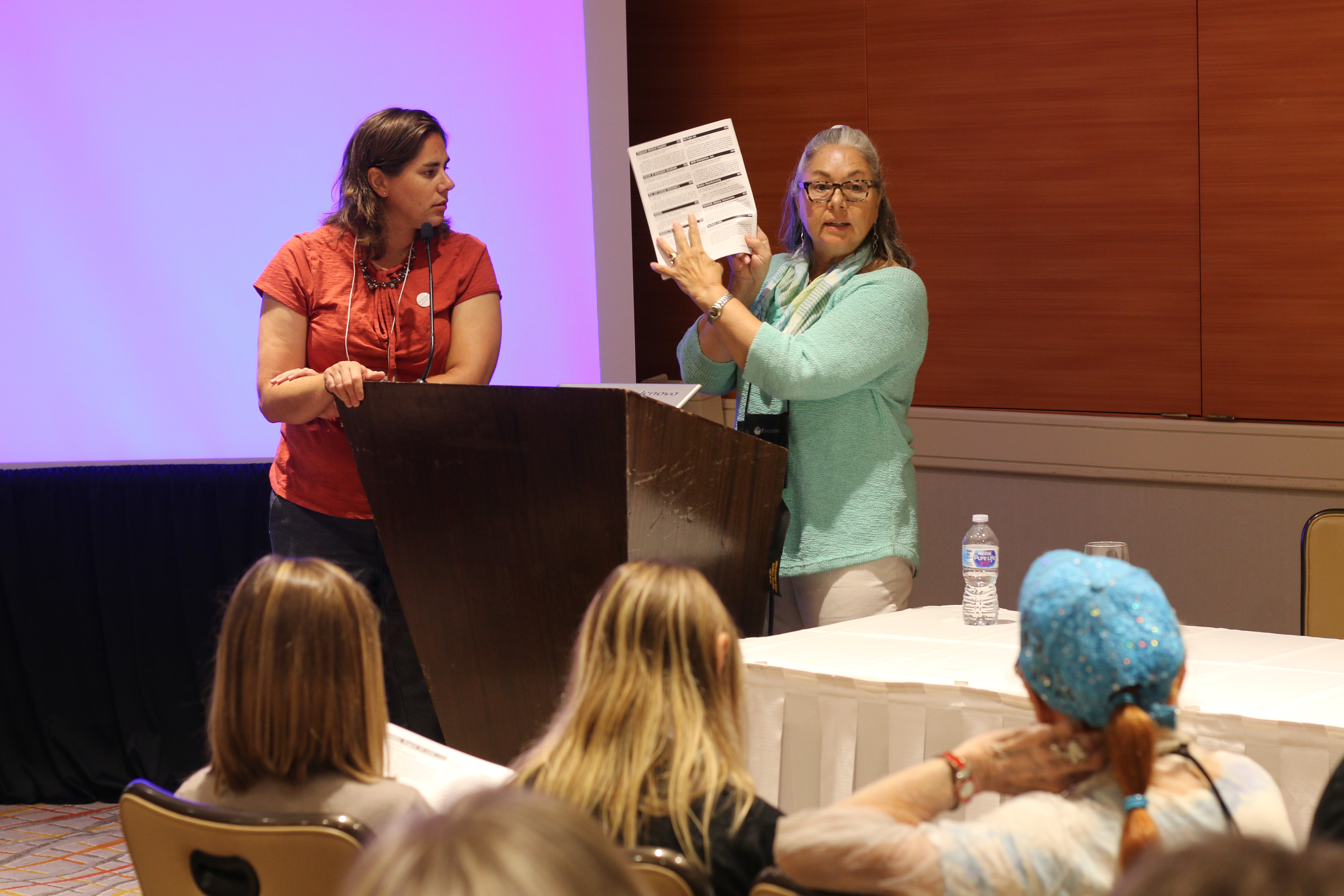By UOAA Advocacy Committee Members:
Joanna Burgess-Stocks BSN, RN, CWOCN
Anita Prinz RN, MSN, CWOCN
Why does one have their bladder removed?
The most common reason for removal of the bladder (radical cystectomy) is due to bladder cancer. Less common reasons are due to gynecological cancers of the vagina and uterus and rectal cancers. These cancers may invade the bladder. Indications for bladder removal not related to cancer include bladder dysfunction due to a neurological impairment, radiation cystitis, interstitial cystitis or some kind of trauma that has occurred.
Whatever the reason for bladder removal, it takes consultation with a surgeon to determine the most effective bladder diversion and one that will result in the best quality of life. This article focuses on continent urinary diversion types.
To pouch or not to pouch?
Patients facing radical cystectomy may be presented with several surgical options; urostomy (ileal conduit), a continent pouch, or orthotopic neobladder. Many candidates naturally want an option that does not require wearing an ostomy pouch. However, continent diversion surgery needs to be thoughtfully and seriously considered as these surgeries are extensive and have possible complications including incontinence.
Continent Urinary Diversion Types:
With a continent urinary diversion one has control over when the bladder is emptied versus a urostomy (ileal conduit) where one does not have control and urine output must be contained in a pouching system. Individuals with continent diversions will either catheterize a continent pouch several times a day or they will learn to urinate through the urethra. These surgeries are typically done at large teaching hospitals which for many, may be located quite a distance from where they live. This should be considered, as regular post-operative visits are necessary.
The continent pouch is a surgical procedure in which a “reservoir” is created by opening up loops of bowel (small or large intestines) and sewing them back together to create an internal pouch or pseudo-bladder. This is now where urine is stored in the body. The urine is drained on a regular basis through a stoma (intestinal channel) located on the abdomen and connected to the reservoir. The stoma is continent (does not leak urine) because it is created with a valve already located in the body (the ileocecal valve) or a valve is created surgically. The valve is placed between the internal reservoir and the stoma. The valve stops urine from exiting the body until a catheter is inserted.
These diversions do not require the use of an ostomy pouch but are managed with a stoma cover (foam dressing) or a piece of gauze for protection. Emptying the bladder is done by inserting a catheter into the stoma. Manual dexterity is a must for learning this technique. Catheters, water-soluble lubricant, and stoma covers will be your needed supplies. Catheters can be cleaned and reused. Over the first year of surgery the capacity of the continent pouch will increase from 300 to 500 mls. Thus, the time between each catheterization will increase until a frequency of every 4-6 hours is achieved.
The Indiana, Modified Kock Pouch, Mitranoff, Miami and Mainz are types of surgical procedures to create a continent pouch. The choice of which one to use is based on the surgeon’s assessment of which one will be most appropriate for the individual. Want to know what it’s like having an Indiana Pouch? Watch this YouTube video.
Specific Considerations in choosing a continent pouch:
- Frequent self-catheterization
- Occasional irrigation to cleanse the pouch of mucous
- Sufficient manual dexterity
- Acceptance of the appearance of a stoma
- Evaluation and preoperative stoma site marking by a WOC nurse is important in preparing for this surgery.
The orthotopic neobladder, a bladder substitute, is created from the small intestines much like the continent pouch. With this technique, a reservoir or pouch is created to hold urine which is then connected to the urethra to allow urination in the usual manner. The individual will sit to urinate and must learn to relax the urethral sphincter and bear down and/or press on their belly to empty all the urine.
It is recommended that neobladder candidates should have their pelvic floor muscles’ (PFM) strength, tone, and endurance evaluated prior to surgery. Learning how to do pelvic muscle exercises before surgery is helpful and will need to be continued after the catheter has been removed following surgery. Achieving continence will take consistent daily practice with timed toileting and strengthening the pelvic floor muscles.
People who undergo surgery for a neobladder must be aware of the potential for both daytime and nighttime incontinence and urinary retention. However, this will improve but it may take up to one year. Current studies show vast ranges in complete continence after one year from 22-63%1. Patients need to be educated regarding regular toileting and use of continence aids to manage this potential problem. Another consideration is that individuals will need to learn self-catheterization as periodic irrigation with a catheter will be required to remove mucous that can build up in the bladder and may be needed to help with urinary retention. When considering surgery for a neobladder, one must be open and honest with both self and the surgeon concerning your feelings of caring for a neobladder and the potential problems of incontinence and urinary retention.
Additional neobladder facts are here.
Specific Considerations when choosing a neobladder:
- Must be able to adjust to scheduled voiding every 2-3 hours
- Must be able to perform self-catheterization as needed to drain urine or mucous.
Special Considerations with Continent Diversions
A continent diversion does not have muscles to expand or contract like a natural bladder, nor does it have nerve endings to alert you when it is full. These changes require the individual bear down and press on their belly to aid in emptying it and/or insert a catheter into the stoma or the urethra. Individuals must become very in-tune with their bodies as to when it is time to empty. In the beginning, most individuals must rely on alarms to remind them to empty their new bladder. After a period of time, many state that they get a “sense” that they need to empty.
Individuals with continent urinary diversions have an increased risk for many complications, the most common being urinary tract infections. Metabolic problems can also occur as the “new” bladder absorbs urine byproducts such as ammonium, hydrogen and chloride. Other complications include pouchitis (inflammation of the pouch), pouch rupture, kidney infections, stomal stenosis (when the diameter of the stoma at the skin level narrows or constricts), urethral strictures, bladder stones, and B12 deficiency. The prostate is most always removed in radical cystectomy procedures making sexual performance a concern in men. Women may also experience painful intercourse.
One of the most difficult and emotionally challenging complications of these surgeries is the development of incontinence (urine leakage; the inability to control urine). This can happen either from the stoma or urethra. Those with continent pouch diversions can wear an ostomy pouch to contain the leakage. Those with neobladders may need to catheterize themselves on a regular basis or wear incontinence garments. Treatments vary and surgical interventions may be necessary.
Why would continent urinary diversion surgery not be considered?
Continent diversion surgery requires a patient to have a healthy bowel. They are also surgically challenging to create making it a lengthy OR procedure. The following are reasons why a surgeon may not consider continent diversion surgery:
- The intestine is diseased (i.e., inflammatory bowel disease)
- Past history of multiple bowel surgeries
- Overall general poor health
- Treatment with pelvic radiation therapy
- There is disease of the bladder neck and/or urethra (in cases of cancer for neobladder)
- Poor working urinary sphincter (for neobladder)
- Liver dysfunction
- Kidney disease
- Poor manual dexterity
- Poor motivation to care for self
In conclusion
Those who choose continent diversion surgery can lead a happy and successful life without the need of wearing a pouching system. However, one must be counseled prior to surgery of the work that goes along with daily life in managing the diversion and the possible complications that may result. Individuals should wear a Medic Alert bracelet at all times in the event of an emergency to alert caregivers. Support is imperative to adapt to a new body, and new life, physically and emotionally. UOAA is here for you. Check out our helpful continent urostomy guide.
1Nayak, A. L., Cagiannos, I., Lavallée, L., Morash, C., Hickling, D., Mallick, R., & Breau, R. H. (2018). Urinary function following radical cystectomy and orthotopic neobladder urinary reconstruction. Canadian Urological Association Journal, 12(6), 181-6. https://doi.org/10.5489/cuaj.4877
Resource: The American Physical Therapy Association (www.apta.org) has information on therapists that specialize in working with pelvic floor muscles and incontinence.


 Wow. Right?
Wow. Right?


